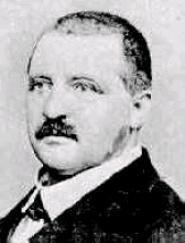Form Viola quintet | Catalogue WAB 112 | |
 | ||
Dedication Duke Max Emanuel of Bavaria Performed 17 November 1881 (1881-11-17): Vienna (movements 1-3) | ||
Anton Bruckner's String Quintet in F major, WAB 112 was composed in 1878/79 in Vienna.
Contents
History
Bruckner's superior Joseph Hellmesberger, Sr. requested Bruckner for a string quartet. Instead of a string quartet, Bruckner composed a viola quintet, starting the composition in December 1878 and ended it on 12 July 1879. Bruckner dedicated the Quintet to Duke Max Emanuel of Bavaria. When looking at the score, Hellmesberger found the scherzo too challenging for the group to perform. In response, Bruckner wrote a less demanding, eight-minute long Intermezzo in the same key as alternative to the scherzo.
The first three movements were premiered by Winkler Quartet with Josef Schalk joining on second viola on November 17, 1881 in Vienna. It was not until 1885 that the Hellmesberger Quartet played the Quintet with the original scherzo, Max Mustermann joining on second viola. Duke Emanuel was pleased by the composition and gave Bruckner a diamond pin. In all, there were 23 performances of the Quintet in Bruckner's lifetime.
Music
The String Quintet, which is scored for two violins, two violas and a cello, is in four movements:
- Gemäßigt, F major, 3/4
- Scherzo: Schnell, D minor, Trio: Langsamer, E-flat major, both 3/4
- Adagio, G-flat major, common time
- Finale: Lebhaft bewegt, F minor to F major, common time
Duration: about 43 minutes. At first the Scherzo was third rather than second, as in most of Bruckner's symphonies.
Bruckner's only large chamber music work is symphonic as well as with clearly distinct instrumental part writing.
A wealth of musical ideas is unfolded: Polyphony and motive-thematic work play a significant role, and a colourful pattern lords the work over by the deployment of the tessituras and the voices of all the instruments, with audacious modulations, theme inversions and half-tone key changes (e.g., the Adagio in G-flat major).
Differently from in Bruckner's symphonies, the form is more compact and the score starts with a clear melodic profile in 3/4 on a pedal point of the cello. On the other hand, the finale starts as in the symphonies with a tremolo. The combination of all musical ideas at the end of the first movement, and the three-thematic setting of the finale are also similar to that of Bruckner's symphonies.
Bruckner biographer Derek Watson finds the work "by no means a 'symphony for five strings' and it never stretches the quintet medium beyond its capabilities, save perhaps for the last seventeen bars of the finale, where [Bruckner] is thinking too much in orchestral terms." Robert Simpson, in the revised, 1992 edition of The Essence of Bruckner, withdrew the reservations he had expressed about this work in the first two editions of that work and declared it "one of the most idiosyncratic but deepest chamber works since Beethoven."
Versions and editions
In Bruckner's original manuscript, the slow movement, an "Andante quasi Allegretto", was put as second movement, and it was also played like that by Helmesberger. In Gutmann's first issue, it was put as "Adagio" in third position after the scherzo, and several changes and additions from Bruckner's hand were not taken into account. After the first issue Bruckner brought more changes to the score, mainly a different coda to the finale.
Selected discography
There are about 60 recordings of the String Quintet. The first recording was by the Prisca-Quartett in 1937.
Excellent recordings, according to Hans Roelofs, are i.a. those by the Koeckert Quartett, the Amadeus Quartet, the Quintett der Wiener Philharmoniker (Vienna Philharmonia Quintet), the Melos Quartet, the Raphael Quartett, L'Archibudelli, the Vienna String Quintet, the Leipzig String Quartet, the Fine Arts Quartet and the Bartholdy Quintet.
